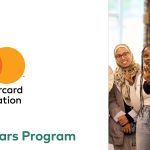So, you’re brooding about getting to study at a university within the US? Great! It’s a desirable and enormously varied country, with a proud history of top-notch education opportunities. There’s little doubt that being a student in America may be a memorable and highly rewarding experience.
We’ve all seen those US college movies, thinking we have a reasonably good idea of what to expect once we arrive. However, Hollywood isn’t always the simplest at reflecting reality – and considering how crazy a number of those movies are, it probably isn’t such a nasty thing during this case. Despite this, there’s little question that you’re certain tons of fun, many inspiring lectures, and therefore the chance to satisfy some great people.
Here is a list of nine things that each student should realize studying within the US, just to clear up a number of the misconceptions you’ll have picked up along the way.
- University within the US is called ‘college’: In most countries, the word “college” is related to vocational courses, post-16 education, or the place you attend devour more free or work-based certifications. In the US, the word college is synonymous with the university, which is well worth knowing if you would like to avoid confusion.
- You don’t need to decide what to study directly: In the US, students are expected to require about five subjects per semester then declare a serious (the main subject that you simply will graduate in). Often, those subjects may have little or nothing to try to do together with your final major. It’s not surprising to seek out students majoring in robotics, but taking a “minor” course in German, English literature, mathematics, or something completely different on the side. This ability to still study a spread of subjects is one of the foremost attractive things about getting to university within the US.
- The primary week are going to be either heaven or hell: The first week of school at the overwhelming majority of folks colleges may be a chance for college kids to urge to understand one another, check in to clubs, societies and fraternities and attend parties and events held by your college. You’ll be during a whirlwind of disorientation; trying to recollect people’s names, maintaining your energy levels, and getting lost on campus. like it or hate it, it’s a rite of passage that seemingly everyone has got to undergo.
- Textbooks are crazily expensive: The people producing college textbooks and other reading materials within the US must be laughing all the thanks to the bank – those things cost an unprecedented amount of cash. Luckily, social media groups dedicated to sharing or passing on second-hand textbooks are getting more common, so you would possibly be ready to find some bargains.
- US college life is laid-back. Grading isn’t: There seems to be a huge disparity within the US between the relatively relaxed nature of lectures, the vibe of the scholar community, and therefore the tough grading structures employed by the universities themselves. Making even the slightest error with citations or essay structure is often a moment fail, so confirm you check and double-check all the work that you simply submit.
- There’s more to US colleges than simply the Ivy League: The Ivy League colleges of America are renowned everywhere on the planet for their quality and prestige. However, they aren’t the sole great universities within the US. counting on what kind of course or experience you would like, it’d be worth looking into one among the opposite 4,000 quality universities within the US. you would possibly find something better suited to you and save yourself an entire load of cash, too.
- There’s more flexibility than you would possibly expect: US colleges run a policy of high flexibility when it involves changing your mind about the courses you’re taking and even the school you’re attending. you’ll change your major as repeatedly as you wish if you are feeling it doesn’t suit you, and you’ll even swap colleges using your credits without having to pay an additional dime.
- It’s not as expensive as you would possibly think: US colleges are notorious for being among the foremost expensive within the world, but this isn’t always the case. the value of school within the US covers such a lot quite it does in other countries – the worth is inclusive of medical insurance, accommodation, subsistence then far more. it is also always worth checking what aid you’re eligible for from your university and any scholarships that you simply could be ready to apply for.
- College sports matter: If you’re from Europe or elsewhere within the world, likely, your school or university sports teams won’t be that much of an enormous deal – just a few friends meeting up to kick a ball around with the neighbouring university. In the US, however, college sports are an enormous deal. You’ll be expected to support your university teams, go along to matches, and stay updated on game results. It’s all a part of the experience, and it is often tons of fun to urge involved in.
Table of Contents
Top 10 Courses to Study in USA In 2021
Working within the US
During some time as a world student within the U.S., you’ll decide you would like to urge employment — whether it’s to lighten the load of your tuition, gain some work experience, or simply have a touch extra pin money to spend.
Keep in mind, though, that as a world student who is within the U.S. on a visa, you cannot just leave and obtain any job you would like. There are regulations you want to follow. Working illegally will land you in predicament with the U.S. government, and no one wants that.
What to try to First
Before you start the method of finding employment, contact your Designated School Official (DSO). that is the person your school designated to help international students. If you’re already a student, you likely already made contact together with your DSO once you arrived. But if you haven’t, any school official should be ready to point you to the proper person or department.
Your DSO will assist you to apply for a Social Security Number (required for all students working within the U.S.) and guide you thru the acceptable steps.
Employment Opportunities
The Department of Homeland Security outlines four ways for international students to legally add the U.S. on an F1 (student) visa:
- On-Campus Employment
- Off-Campus Employment
- Curricular Practical Training (CPT)
- Optional Practical Training (OPT)
- On-Campus Employment
On-campus employment is that the most freely available to F1 students, and refers to figure that takes place on campus or at an “educationally affiliated off-campus location.”
According to the Department of Homeland Security, being “educationally affiliated” means the off-campus location must meet a minimum of one among these two criteria:
- Associated with the school’s established curriculum
- Related to contractually-funded research projects at the post-graduate level
The latter part of that definition is worth emphasizing, as many colleges and universities have buildings and academic partnerships everywhere in town.
So in other words, you’ll work somewhere on your school’s campus, like a bookstore, library, dorm, or cafeteria. otherwise, you could work somewhere like an off-campus lab that’s affiliated together with your school. on-campus employment work on a student visa in the US.
This is the sole sort of employment you’ll pursue starting in your first school year, and you’ll apply as early as 30 days before classes start.
Work hours are limited to twenty hours per week while school is in session, but you’ll work full time during holidays and vacation periods. If you select to figure quite one on-campus job, your total combined hours per week cannot exceed 20 hours.
- Off-Campus Employment
Jobs outside of your school are only available to international students who have completed one full school year and who have a qualifying economic hardship or an emergent circumstance.
According to the DHS, a qualifying economic hardship entails “new, unexpected circumstances beyond [your] control,” such as:
- Loss of monetary aid or on-campus employment (if the scholar isn’t at fault)
- Large increases in tuition or living costs
- The substantial decrease within the relative value of currency the scholar depends upon to pay expenses
- Unexpected changes within the financial conditions for a student’s sources of monetary support
- Unexpectedly large medical bills not covered by insurance
- Other substantial, unexpected expenses
Emergent circumstances are defined as “world events that affect a selected group of F-1 students and which causes them to suffer severe economic hardship, including, but not limited to natural disasters, wars and military conflicts, national or international financial crises.”
Certain regulatory requirements could also be suspended for college kids that are from parts of the planet that are experiencing emergent circumstances. this is often referred to as Special Student Relief.
To apply for off-campus employment, contact your Designated School Official (DSO). He or she must approve the rationale and recommend off-campus employment because the first is a part of the appliance process. off-campus employment work on student visa within the u.s.
- Curricular Practical Training (CPT)
Curricular Practical Training (CPT) should be a part of your school curriculum. it’s designed to offer you real-world experience in your field of study, like an internship or practicum with a partnering employer, the DHS explains.
Unlike other employment categories, CPT is often full time, with no weekly hour limit. you’ll even have quite one CPT authorization at an equivalent time.
Keep in mind that if you participate during a year or more of full-time CPT, you’re ineligible for Optional Practical Training, or OPT (which you’ll read more about below).
To qualify for CPT, you want to have completed one full school year, unless you are a grad student whose program requires immediate CPT.
- Optional Practical Training (OPT)
Optional Practical Training (OPT) refers to temporary employment concerning your field of study (working at a television station, for instance, would qualify if you’re studying journalism). Eligible students can receive up to 12 months of OPT employment.
There are two sorts of OPT:
- Pre-completion OPT: this feature is out there once you’ve got completed one full school year at a U.S. college or university. you’ll workout for twenty hours every week when school is in session or full-time when it’s not.
- Post-completion OPT: you’ll apply for this feature after completing your studies. those that are authorized for post-completion OPT can work either part-time or full time.
You’ll need approval from your DSO, who will then endorse your application and assist you to submit it to U.S. Citizenship and Immigration Services. optional practical training work on a student visa in u.s.
STEM OPT Extension
If you finish your studies and participate during a period of post-completion OPT, you would possibly then qualify for the STEM OPT extension, which may be a 24-month period of temporary training that directly relates to your program of study.
This extension is merely available if your employer is enrolled within the E-Verify program and if you’ve got a degree in one of the STEM (science, technology, engineering, or mathematics) fields on this list.
If you’re considering running your side gig (like this student who turned his dormitory into a restaurant), know that the U.S. government views that as employment.
To make it legal, you’d need to qualify and apply for OPT, which we covered above.
As you’re taking subsequent steps toward employment, be mindful that working without adequate authorization can cause deportation and your inability to return to us. Don’t risk it. it isn’t worth jeopardizing all the trouble and expenses you’ve invested this far. Use the resources available to you, starting together with your school








